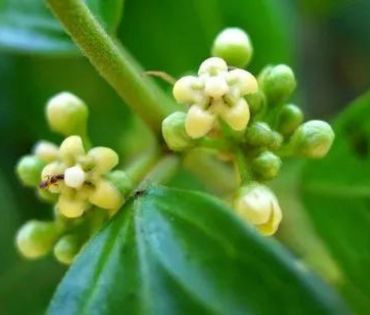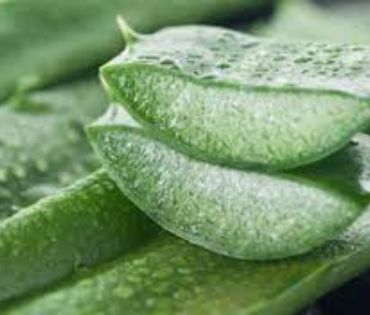About Shilajit
Shilajit is a sticky resinous substance found in the rocky mountains of the Himalayas, Altai, Caucasus, and other mountain ranges. In traditional Ayurvedic medicine, Shilajit is highly regarded for its rejuvenating properties. It is formed over centuries by the decomposition of plant and microbial matter.
Health Benefits of Shilajit:
Shilajit is associated with a variety of health benefits, many of which are rooted in its rich mineral and nutrient composition. Here are some notable health benefits of Shilajit:
1.Energy and Stamina Boost:Shilajit is known to enhance energy levels and reduce fatigue, promoting physical and mental stamina.
2.Cognitive Function Improvement:The fulvic acid in Shilajit may support cognitive functions, including memory, focus, and mental clarity.
3.Adaptogenic Properties:As an adaptogen, Shilajit helps the body adapt to stressors, promoting overall resilience and balance.
4.Anti-Inflammatory Effects:Shilajit exhibits anti-inflammatory properties, which can be beneficial for individuals dealing with inflammatory conditions
5.Immune System Support:The antioxidants and minerals in Shilajit contribute to immune system health, helping the body defend against infections and illnesses.
6.Detoxification:Shilajit aids in detoxifying the body by promoting the removal of heavy metals and toxins.
7.Anti-Aging Properties:The antioxidants and fulvic acid in Shilajit may help combat oxidative stress, potentially slowing down the aging process.
8.Bone Health:Shilajit's mineral content, including calcium and magnesium, supports bone health and may contribute to the prevention of osteoporosis.
9.Cardiovascular Health:Some studies suggest that Shilajit may have cardiovascular benefits, such as improving lipid profiles and supporting heart health.
10.Male Reproductive Health:Shilajit has been traditionally used to support male reproductive health, including fertility and testosterone levels.
11.Anti-Diabetic Effects:Research indicates that Shilajit may have potential anti-diabetic effects, helping regulate blood sugar levels.
12.Anti-Anxiety and Stress ReductionShilajit's adaptogenic properties may contribute to stress reduction and alleviate symptoms of anxiety.
13.Wound Healing:The presence of minerals and other bioactive compounds in Shilajit may support wound healing and tissue repair.
14.Anti-Microbial Properties:Shilajit may exhibit antimicrobial effects, helping combat certain types of bacteria and fungi.
Quality and Sourcing of shilajit
Quality and sourcing of Shilajit, often referred to as "asphalt," are critical factors that can significantly impact its effectiveness and safety. Here are key considerations for assessing the quality and sourcing of Shilajit:
1.Authenticity and Purity:- Ensure that the Shilajit product is authentic and free from contaminants. Authentic Shilajit should have a distinct resinous appearance and a characteristic odor.
- Look for products that have undergone testing for purity, confirming the absence of adulterants or harmful substances.
Significance in Traditional Medicine
- Adaptogenic Properties: Shilajit is considered an adaptogen, helping the body adapt to stress and maintain balance
- Energy Booster: It is known to enhance energy levels and reduce fatigue, promoting vitality and stamina.
- Cognitive Benefits: Shilajit is believed to support cognitive functions, improving memory, and promoting mental clarity
- Anti-Inflammatory: Traditional medicine often uses asphaltum for its anti-inflammatory properties, aiding in various health conditions.
- Rich in Fulvic Acid: Shilajit contains fulvic acid, which enhances nutrient absorption and transport across cell membranes.
- Mineral Composition: It is a rich source of essential minerals like iron, copper, zinc, and magnesium, contributing to overall well-being.
- Antioxidant Activity: Shilajit exhibits potent antioxidant effects, protecting cells from oxidative stress and supporting a healthy immune system.
- Detoxification: It aids in detoxifying the body by promoting the removal of heavy metals and toxins.
Unique Properties:
Shilajit is a natural, resinous substance that oozes from the cracks of rocky mountainous areas, particularly in the Himalayas, Altai, Caucasus, and other high-altitude regions. It is a complex mixture of organic plant materials and microbial matter that has undergone centuries-long decomposition and transformation.
Natural Origin:
- Formation Process: Shilajit is formed through the decomposition of plant and microbial matter over an extended period. Plants and microorganisms deposit organic materials in the rocks, which undergo microbial digestion and transformation.
- Pressure and Temperature: The organic matter becomes subjected to immense pressure and high temperatures within the rocky layers of the mountains. This geological process results in the formation of a thick, resinous substance rich in bioactive compounds.
- Humification: The decomposition process, known as humification, involves the conversion of organic matter into a humus-like substance. This substance undergoes further changes, ultimately leading to the creation of Shilajit.
Insights into Formation:
- Altitude and Climate: Shilajit is typically found at altitudes ranging from 1000 to 5000 meters. The extreme climatic conditions, including low temperatures, contribute to the preservation of the resinous material.
- Mineral-Rich Environment: The rocky mountainous terrain provides a mineral-rich environment. As organic matter decomposes, it interacts with these minerals, enriching the Shilajit with essential elements.
- Microbial Activity: Microbial activity in the decomposing matter plays a crucial role in the transformation process. The microbial breakdown contributes to the formation of bioactive compounds and imparts unique properties to Shilajit.
Shilajit boasts a rich mineral and nutrient composition, making it a valuable natural substance with numerous health benefits. Here are the key components that contribute to its nutritional profile and health-promoting properties:
Fulvic Acid:- Significance:Fulvic acid is a major component of Shilajit and plays a crucial role in nutrient absorption and transport within the body.
- Benefits: It enhances the bioavailability of minerals, making it easier for the body to absorb essential nutrients.
Trace Minerals:
- Minerals Present: Shilajit contains a spectrum of essential minerals, including iron, copper, zinc, magnesium, manganese, and others.
- Benefits: These minerals are vital for various physiological functions, such as energy production, immune system support, and overall well-being.
Dibenzo-Alpha-Pyrones (DBPs):
- Significance: DBPs are bioactive compounds found in Shilajit.
- Benefits: They contribute to the antioxidant properties of Shilajit, helping neutralize free radicals and reduce oxidative stress in the body.
Humic Acid:
- Role: Humic acid is another organic component present in Shilajit.
- Benefits: It supports the body's detoxification process, aiding in the removal of heavy metals and toxins.
Fulvic and Humic Acid Complexes:
- Combination: The synergistic action of fulvic and humic acids in Shilajit contributes to its overall health-promoting effects.
- Benefits: This complex supports nutrient absorption, energy production, and helps maintain a balanced and resilient body.
Antioxidants:
- Presence: Shilajit contains various antioxidants, including DBPs and other polyphenolic compounds.
- Benefits: Antioxidants help combat oxidative stress, supporting cellular health and reducing the risk of chronic diseases.
Adaptogens:
- Role: Shilajit is recognized as an adaptogen, helping the body adapt to stress and maintain homeostasis
- Benefits: It enhances the body's resilience to physical, chemical, and biological stressors, promoting overall well-being.
Vitamins:
- Occurrence: Shilajit may contain small amounts of vitamins, including vitamin A, B-complex vitamins, and vitamin C.
- Benefits: These vitamins contribute to various physiological functions, such as immune system support and skin health.
2.Sourcing and Geographic Origin:
- Shilajit sourced from high-altitude regions, such as the Himalayas, Altai, or Caucasus mountains, is often considered of higher quality. The geographic origin can impact the mineral and nutrient composition of Ash.
- Products sourced from reputable regions known for producing quality asphaltum are more likely to provide the expected health benefits.
3.Extraction Method:
- The method of extraction can affect the quality of Shilajit. Traditional methods involve collecting naturally oozing asphaltum from rock crevices. However, some products may use solvent-based extraction
- Choose products that use safe and natural extraction processes to preserve the bioactive compounds and avoid the presence of residual solvents.
4.Testing and Certification:
- Look for Shilajit products that have undergone third-party testing and certification. This ensures that the product meets quality standards and is free from contaminants.
- Certifications from reputable organizations or laboratories add credibility to the product's quality.
5.Fulvic Acid Content:
- Fulvic acid is a key component of asphaltum. Products should specify the fulvic acid content, as it contributes to the substance's health-promoting properties.
- Higher fulvic acid content is generally associated with better quality Shilajit.
6.Ethical Harvesting Practices:
- Ethical and sustainable harvesting practices are crucial for environmental conservation and maintaining the integrity of Shilajit-producing regions
- Choose products from suppliers committed to ethical and sustainable sourcing.
7.Manufacturer Reputation
- Research the reputation of the manufacturer or brand. Established and reputable companies are more likely to prioritize quality sourcing, manufacturing processes, and transparency.
- Read customer reviews and testimonials to gauge the satisfaction of other users.
8.Transparent Labeling:
- The product label should provide clear information on the ingredients, sourcing, and any third-party certifications.
- Avoid products with ambiguous or incomplete labeling.
How to Use asphaltum
Using Shilajit involves understanding dosage guidelines and selecting appropriate application methods. Keep in mind that individual responses may vary, and it's advisable to consult with a healthcare professional before incorporating Shilajit into your routine. Here are general guidelines for using Shilajit:
Dosage Guidelines:
1.Pure asphaltum Resin:- Start with a small amount, such as a pea-sized portion (about 300-500 mg).
- Gradually increase the dosage based on individual tolerance and response.
- A common range for daily intake is 300-500 mg, but some individuals may choose higher or lower doses.
2.Asphaltum Capsules or Powders:
- Follow the recommended dosage provided by the product manufacturer.
- Typically, capsules or powders may offer a standardized dosage, such as 250-500 mg per capsule or serving.
- Adjust the dosage based on your specific health goals and individual response.
Application Methods:
1.Oral Consumption:
- Pure Resin: Dissolve a small portion (pea-sized) of Shilajit resin in warm water or milk. Consume this mixture once or twice a day.
- Capsules or Powders: Swallow capsules or mix Shilajit powder with a beverage of your choice.
2. Sublingual Administration:
- Place a small amount (about rice grain-sized) of Shilajit resin under your tongue.
- Allow it to dissolve slowly for sublingual absorption. This method may enhance the bioavailability of certain compounds.
3.Combination with Food:
- Mix asphaltum resin or powder with honey, ghee, or warm beverages like herbal tea or coffee.
- Incorporate it into smoothies or recipes, ensuring compatibility with the chosen food.
4.Cycle Usage:
- Consider cycling the use of asphaltum, such as taking it for several weeks and then taking a break. This approach helps prevent potential tolerance buildup.
Important Considerations:
- Consistency is Key For optimal benefits, use Shilajit consistently as part of your daily routine.
- Hydration Drink plenty of water throughout the day to stay hydrated, especially when using Shilajit.
- Time of Consumption While Shilajit can generally be taken at any time, some people prefer taking it in the morning or evening. Choose a time that suits your routine.
- Individual Tolerance: Monitor how your body responds to asphaltum. If you experience any adverse effects, reduce the dosage or discontinue use.
- Medical Consultation If you have underlying health conditions, are pregnant, or are taking medications, consult with a healthcare professional before using Shilajit.
1. What is Shilajit?
2. What are the health benefits of Shilajit?
3. How should Shilajit be consumed?
4. Is Shilajit safe to consume daily?
5. How do I identify high-quality Shilajit?
6. Does Shilajit help with male fertility?
7. What minerals and nutrients are in Shilajit?
8. Are there any side effects of Shilajit?
9. Is Shilajit suitable for vegetarians or vegans?
10. How is Shilajit different from other supplements?




